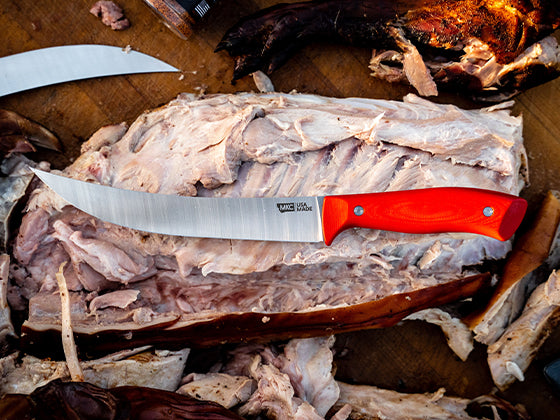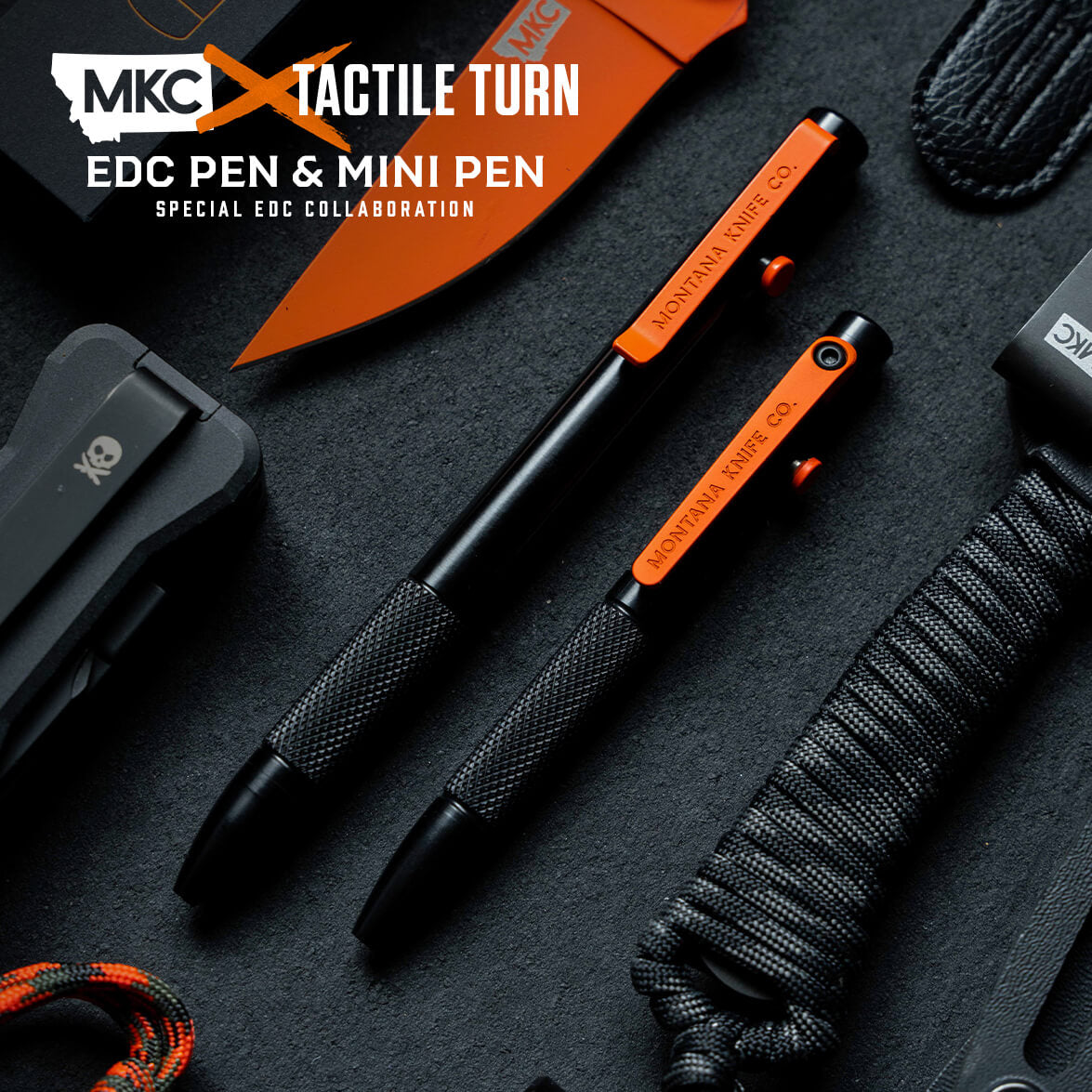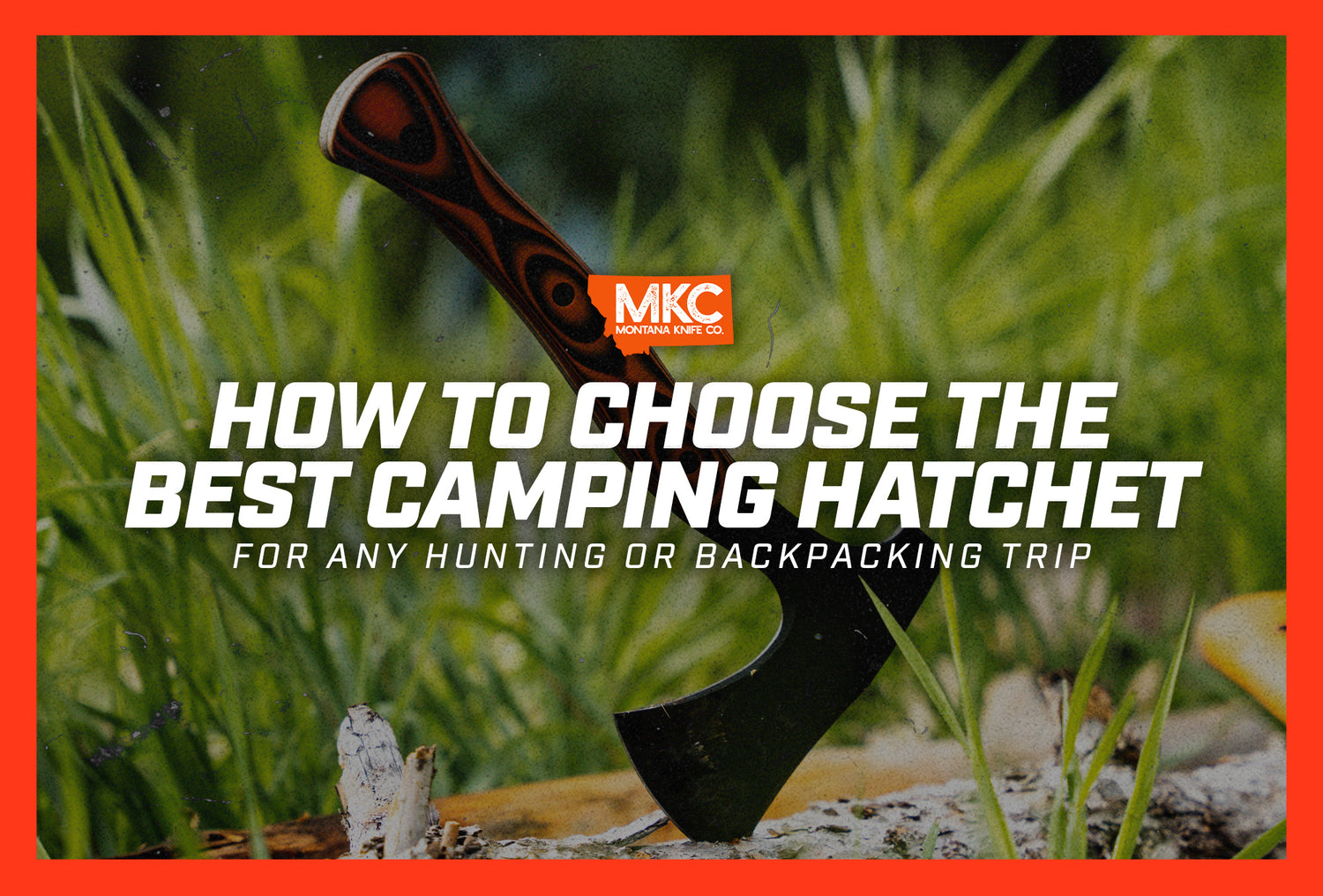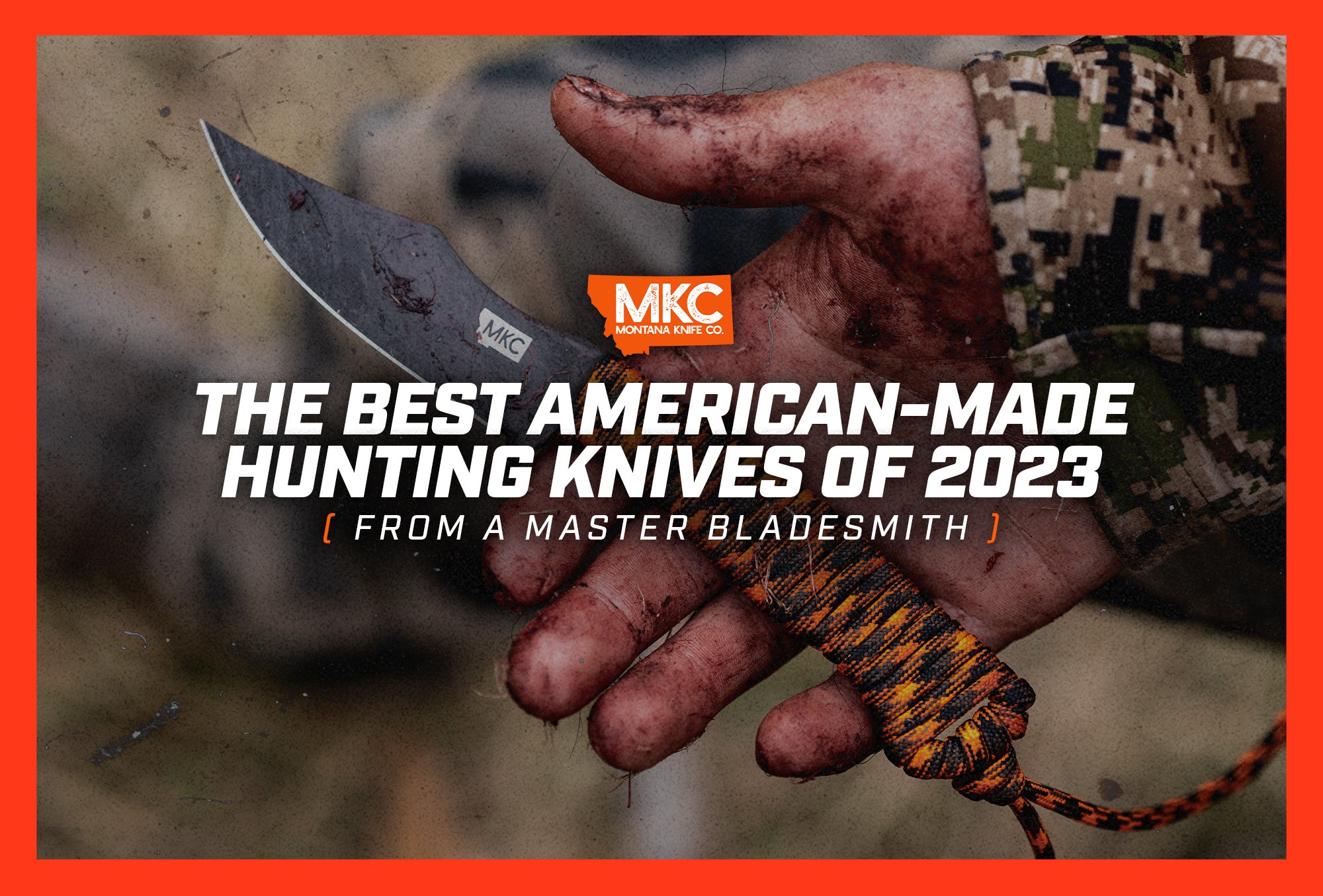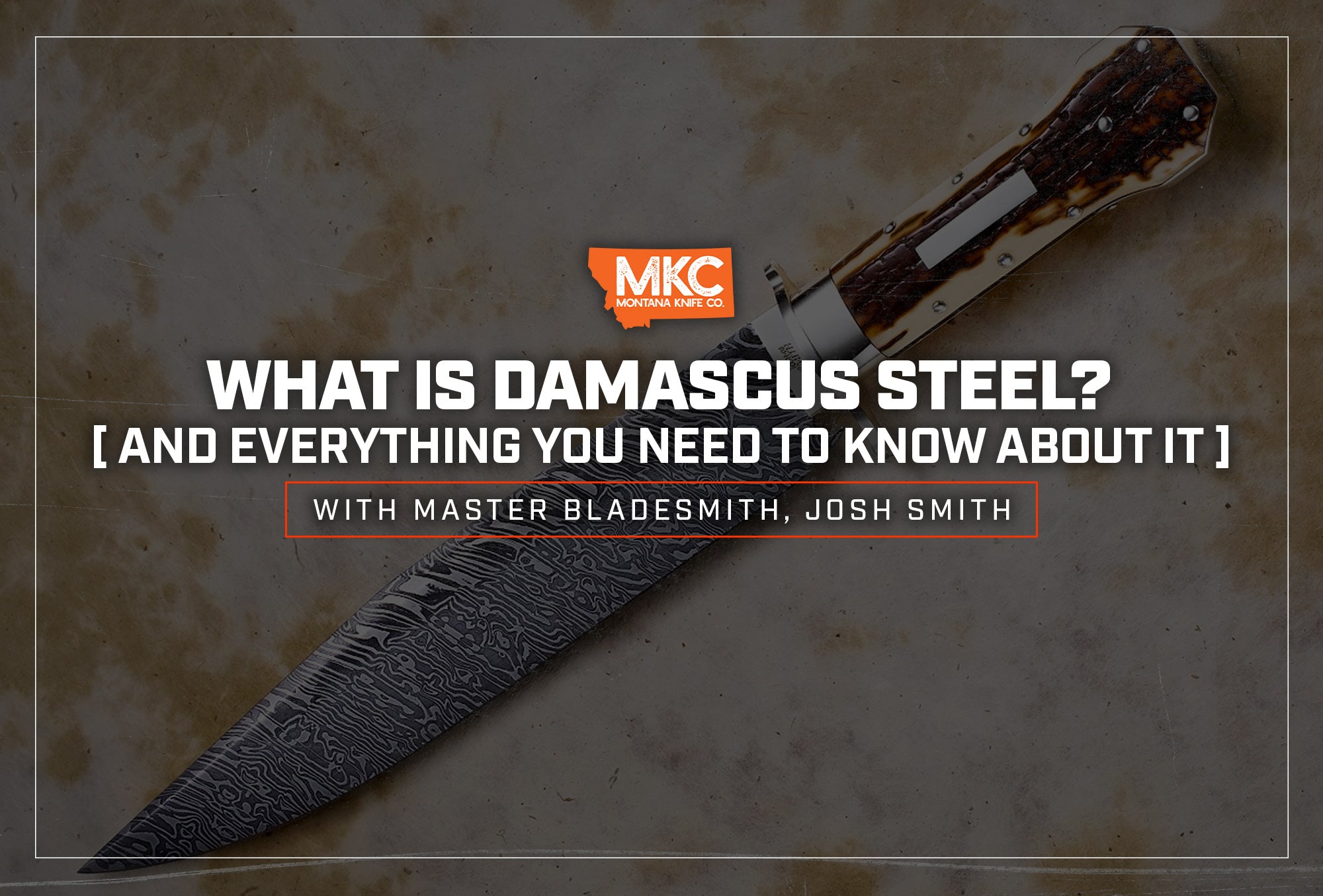As much as we love knives, we can’t argue that a knife is the ONLY tool to bring with you on a backpacking, hunting, or camping trip. Because of their form, knives are limited in what they can do. You often need another tool for bigger jobs.
Instead of bringing one heavy knife on a backpacking trip, I prefer to bring a small, lightweight knife for small tasks and a lightweight backpacking hatchet for more challenging jobs. This way, I know I’m covering multiple points of failure, and I don’t have to worry about breaking my only knife on a long backpacking hunt with tougher jobs like splitting logs or clearing rocks.
That said, having a camping hatchet (in addition to a smaller knife) can be extremely useful on a hunting or backpacking trip.
What Can You Use a Hunting or Camping Hatchet For?
A camping or hunting hatchet serves many practical purposes on a backpacking trip. Some reasons you might need a backpacking hatchet include:
- Cutting down trees or splitting logs
- Skinning or breaking down animals (especially pelvic bones)
- Clearing brush and rocks off your campsite
- Driving stakes into the ground (with the square head of the hatchet)
- Building a shelter
- Chopping ice to clear a path or to find drinking water (for camping or hunting in cold environments)
- Carving and shaping wood to create other tools, such as stakes, walking sticks, and spears
- Preparing food or poking a fire while cooking
What’s the Difference Between an Ax and a Hatchet?
Hatchets and axes may look similar, but they serve unique purposes:
- Ax — Compared to a hatchet, an ax has a longer blade and a heavier head, so it can deliver more force at the point of impact.
- Hatchet — A hatchet offers more control over the cutting edge, so it’s better at finer work, like chopping small kindling wood for a campsite. Hatchets are also easier to conceal and transport, making them ideal for backpacking.

What Characteristics Should You Look for in a Carry Hatchet?
Choosing a backpacking hatchet to bring on your next hunting or camping trip? Keep an eye out for the following features:
Edge
Hatchets are best for finer work, like food preparation or carving wood. A finer edge that’s sharper and cuts similarly to a thick knife edge is extremely useful.
Though hatchets offer more control over their cutting edge than axes, it’s best to leave larger jobs to the ax.
Handle
As far as material, we prefer G10 — a high-pressure fiberglass laminate — instead of wood. G10 is durable, impact resistant, stable, long lasting, comfortable to hold, and good looking.
Look for a handle that isn’t too round or too square. If it’s too round, it’ll turn around in hand, and if it’s too square, it’ll leave blisters on your palms. A shape that falls in between is ideal.
Additionally, look for a hatchet with a larger knob than grip. This provides security in the hands so the hatchet doesn’t fly out of your grasp.
Tang
Hatchets either come with a full tang — meaning the steel runs down through the handle — or with the head attached. We recommend hatchets with a full tang because they’re durable and strong. There’s no chance the hatchet’s head will ever wiggle off or detach from the handle.
Head Shape
The shape of the hatchet’s head in relation to its handle should allow the edge to strike kindling at the proper angle, delivering the most force possible to the center of the hatchet head.
Steel Type
We recommend hatchets made from 52100 ball-bearing steel. This carbon steel is tough, durable, and can last a lifetime.
Weight and Length
A backpacking hatchet should be relatively lightweight — after all, you’ll be carrying it for several days on a camping or hunting trip. That said, a backpacking hatchet should measure between 12″ to 16″ long and be heavy enough to drive through wood.
To quote Goldilocks, find a hatchet that’s “just right.”
Sheath
We recommend a Kydex sheath with a durable strap to keep the sheath secure on the hatchet’s head. It’s helpful to choose a sheath with a belt loop to make your hatchet easier to carry.

Final Thoughts on Choosing the Right Camping or Hunting Hatchet
Before choosing a hatchet, decide what you’ll be using it for. For example, if you’ll be using your hatchet for heavy-duty work, like chopping wood or breaking down animals, you might want to choose a hatchet with a full tang rather than an attached head for extra strength and durability.
If you’re looking for a long-lasting hatchet, Montana Knife Company is releasing a camping and hunting hatchet very soon. You can check our website for more information.
by Josh Smith, Master Bladesmith and Founder of Montana Knife Company


























